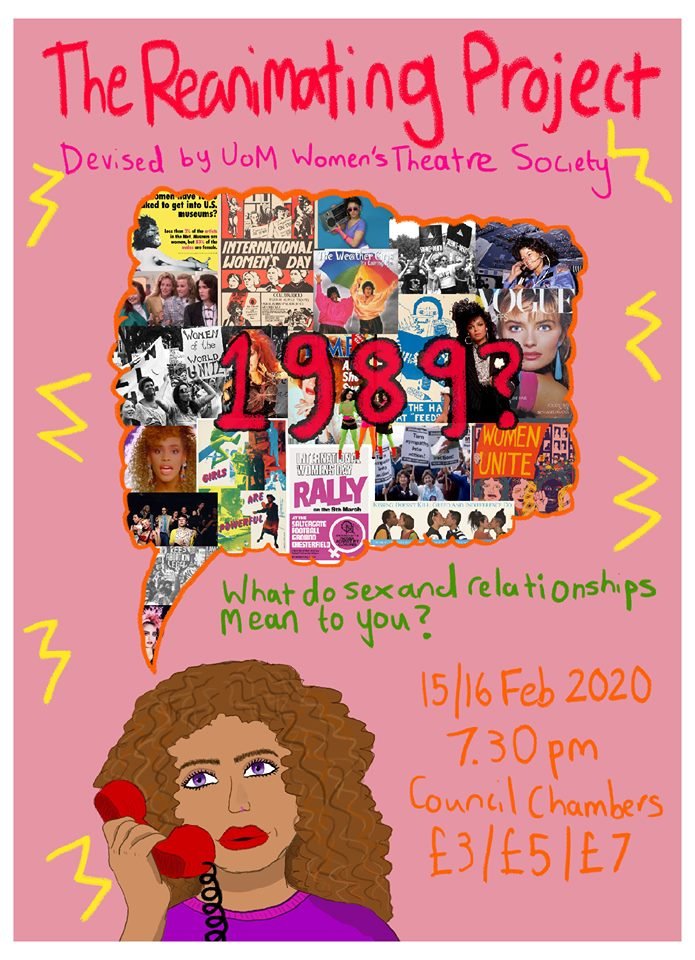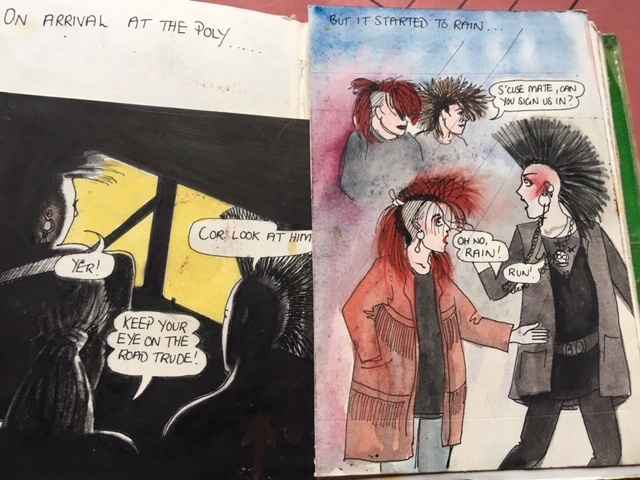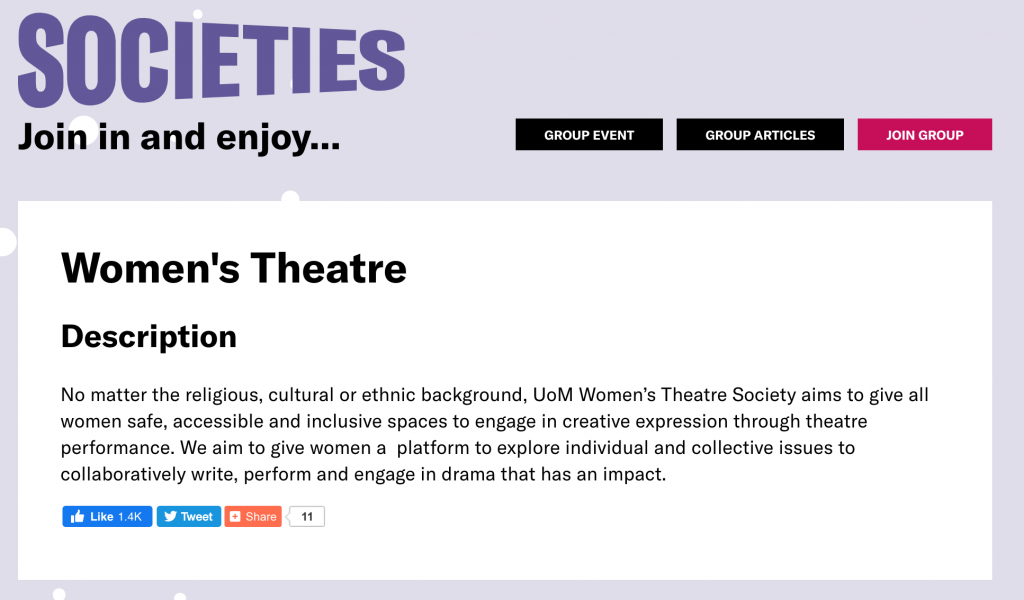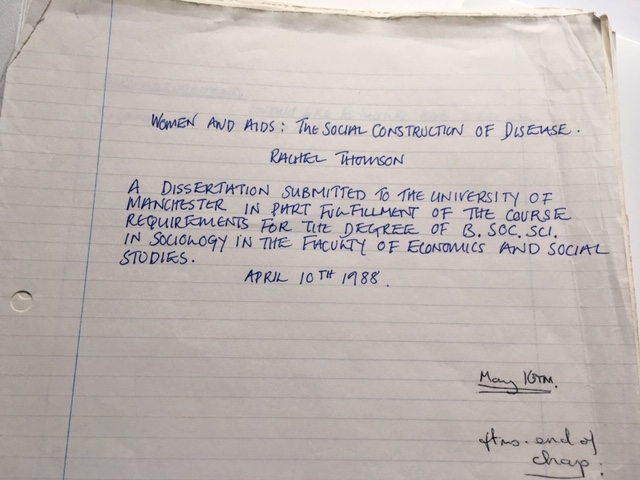Rachel Thomson
In this blog post Rachel Thomson locates our idea of ‘reanimating data’ within a wider methodological landscape and literature, twisting together three methodological threads: the vitality of data; an archival turn within the social sciences and creative approaches to working with time in the research process. The blog identifies the key components of a reanimating approach and points to further reading.
Data – dead and alive
One important element of contemporary social science methodological discussion concerns how we engage with what Adkins and Lury (2009) call a ‘post-empirical’ moment for sociology (see also McLure and others on a post qualitative moment) – that involves stepping away from separating the methods of documentation that we engage with and the data generate this data. This moment is informed by a number of different strands of thought including feminist methodologies which have critiqued the view from nowhere associated with modern scientific paradigms understanding knowledge as situated and agency as relational (for example Haraway 1988, Barad 2007); posthuman approaches associated with science and technologies studies such as John Law’s 2004 After Method which argues simply that methods produce the realities that they seek to understand; and the embrace of a reinvigorated relationship with these data that recognises their vitality and communicative possibilities as laid out for example in Back and Puwar’s manifesto for ‘Live methods’ (2012).
The motif of ‘liveness’ as opposed to deadness is a recurring theme in contemporary discussions of methods, denoting the need to remember that research itself is an embodied social practice involving relationships, feelings and collaborations. The motif of aliveness also connects us to the posthuman notion that agency may not be simply the preserve of people, but for example that documents, objects and data may have agency in their own right. For example Les Back’s account of ‘live sociology’ uses the dead / alive binary to counterpose intrusive empiricism, objectifying practices and zombie concepts with vitalities that transcend human/ objects as captured by new materialism. Dead sociology is objectifying, comfortable, disengaged and parochial. More recently, and in a similar vein Ellingson and Sotorin (2020) call for a sense of academic playfulness that has the capacity to inject new life into what might feel like tired methodological debates. Key motifs in their account include ‘livelineness’, ‘messiness’, ‘data on the move and on the make’, ‘becoming with data’ – which they oppose to notions of dead data and zombie methods.
This ‘re-enchantment’ of data also extends to discussions of data linkage and working with data archives. So, for example Lisa Blackman works with a notion of ‘haunted data’ as a way of exploring hybrid forms of aliveness and deadness made possible by digital methods and transmedia data linkage, suggesting that ‘It is through the connecting up of fragments across space and time that a new collective story-telling machine can and could take form’ (2019: 177). In a Maryanne Dever’s collection on new feminist archive methodologies, Marika Cifor uses the terms ‘animacy’ (‘a quality of agency, awareness, mobility, and liveliness 2012:2) to argue for an understanding of archives as ‘vigorous and changeable’ rather than as ‘static, dusty, and the collectors of dead things and past times’… a space, set of practices, site of intervention’ (2019: 18).
In our approach we use the idea of reanimation – in recognition that there is and always was life in data but also, that in new encounters and entanglements with these materials new things can happen.
The data are out there – an archival turn for the social sciences
The idea that data may already be ‘out there’ and that our engagement with these data can be a site of creativity and novelty has taken some time to evolve within the social sciences and is shaped by the divisions between qualitative and quantitative paradigms that continue to structure the field. Within qualitative approaches there has been considerable resistance to practices of data archiving and re-use, despite official policy inciting these approaches with the deposit and sharing of data sets becoming a condition of public funding and the review of existing data sets a requirement for new proposals. Encouraged by investments in longitudinal qualitative research, the qualitative research community has engaged with what it might mean to work with documents generated by others considering what it might mean to assemble materials from different studies and rethinking the relationship between the original context of a study and the new moments and contexts when such data may be revisited (see for example Hughes et al. 2020). These discussions form part of a wider interest in temporal methods within sociology, that includes revisiting studies, longitudinal approaches and an engagement with archival sources as part of a historical sociology (McLeod & Thomson 2009 for overview). In an important intervention in the field ‘The Archive Project’ (2017) Niamh Moore explains that ‘social science struggles to imagine its own archive’ (149) and this includes ‘the sometimes fraught debate over archiving and (re)using data’ which has ‘compounded this ambivalent relationship’ with archives (149). Moreover, ‘archival research does not appear as one of the sites of innovation in the social sciences’ (149) – often more concerned with questions of access and confidentiality that the potential for knowledge and methodological renewal that they might promise.
Debates within sociology have felt removed from wider interdisciplinary discussions associated with an archival turn, which itself has been fuelled by new possibilities offered by digital methods including a democratisation of collecting and sharing associated with community and everyday archives (Bastian & Flinn 2019, Beer & Burrows 2013, Withers 2015, Eichhorn 2013). In fact, it is spaces where community and academic interests coincide that much of the new wave of interest in archives can be found, including exploring how the re-use of materials from the past might make sense in the present – for example in areas such as black archives; queer archives; feminist archives; and archives as a source of evidence in political struggles. Importantly, archives may operate as effective points of shared interest for different knowledge communities, what Moore (2016), drawing on the writings of Susan Leigh Star, characterises as a ‘boundary object’, shared yet understood in unique ways by different stakeholders, with academics brokering essential access to the resources necessary for preservation and findability for these resources. For DM Withers the feminist archive is our ‘already there’, ‘a field of inheritance’ that demands care and keeping alive ‘through practices of exchange across generations’ – in a way that recognises ‘psychic links between generations’ and the potential of a continuous transgenerational flow/imaginary that is concealed by metaphors of waves ( 20-21, 28). For Moore and colleagues, this kind of work demands a new ‘inventive ethic of care-full risk’ that is more responsive and less prescriptive than the kinds of approaches to ethical practice in social science that have become institutionalised.
We see our work as an intergeneration sociological endeavour, connecting feminist researcher-activists over time within a tradition which is porous and inclusive both in the past and the present.
Rewilding methods – unleashing creativity and unleashing time
The question of how we might engage with archived materials is perhaps one of the main stumbling blocks to social researchers interested in the re-use of the rich data sources that are available to them. Approaches range from large scale data mining approaches that connect data sets (Edwards et al 2021 to smaller scale (often place based) initiatives in which the specificity of data fragments operates as a starting point for engagement with new communities of interest (Lyon & Crow 2012, Moore et al 2022 forthcoming). Questions of how data might be matched across samples, or what it might mean to compare data from the past and present rattle the cage of social science methodologies still reliant on underpinning epistemologies of sampling.
In thinking through how we might work with archived materials we have turned to work in the field of queer temporalities, in particular Beth Freeman’s Time Binds which points to the potential or creative and imaginative methods for exploring thinking about the materiality of archival documents and the ways that they can connect past and present. The idea of the ‘time bind’ provides a way into a rich vein of creative methodology. Drawing on the work of Walter Benjamin, Freeman conceptualises the time bind as ‘achronic correspondences’ (2010: 126) connections between past and present that facilitate antinarrative leaps across time achronic correspondences’. Time binds involve mimetic connections with affective resonance – and when staged within meaningful intergenerational relations these can conjure a sense of ‘afterwardness’ – belated understanding, potential to relive a past she could not live at the time’. Although focused on the past such methods ask us to imagine the future ‘in terms of experiences that discourse has not yet caught up with, rather than as a legacy passed on between generations’ (84). For Freeman Time Binds are found in literary and cinematic works, in the form of homage, pastiche and other kinds of ‘temporal drag’. The perfect match imagined by the social sciences is not a focus, instead the impossibility of matching like with like is understood as generative through an embrace of anachronism – variously conceptualised as ‘habitus out of joint’ and ‘chronotopic disjunctiveness’ (6) that ‘unsituate viewers from the present tense they think they know.’ (61). Freeman seeks a ‘method of literally feeling the historical’ (93), focusing on allegory as a literary form that allows ‘the telling of an older story through a new one’, ‘suturing two times but leaving both visible’ (69).
The methods through which such encounters are possible are participatory and creative. Here we might point to Lyon and Carabelli’s work with contemporary youth on the Isle of Dogs, encountering the archives of Ray Pahl and the imagined futures of their predecessors (Lyon & Carabelli 2016). We might also take up Ellingston and Sorotins (2020) idea of ‘palpating data’ and ‘following data’s lead’ through the staging of data engagement or sense events. The evocation of time itself through an encounter with archival traces is something also suggested by Adkins in her discussion of archives as a site of speculative research. While such sources can attune us to ‘the pastness of data’ they also attune us to ‘the capacities of recorded data itself’, allowing ‘time to emerge as a key object of investigation’, ‘a form of time .. [that] is incomplete, not-yet known, and stands in a possible or not yet relationship to the future and the present it inhabits.’ (Adkins 2017:117). In a similar vein Kate Eichhorn suggests that archives can ‘produce a space to imagine an encounter that otherwise may have remained unimaginable’ (61), offering the idea of ‘archival proximity … the uncanny ability to occupy different temporalities and to occupy temporalities differently, thereby collapsing the rigidly defined generational and historical logics that continue to be used to make sense of feminist politics and theory’ (61). By inviting research participants and audiences to encounter, engage with, revoice and rework words, ideas and feeling captured in research encounters of the past we can open new spaces which allow something new to be experienced and articulated, in ways that escape the well-worn narratives generally available to us (McGeeney et al. 2018, Perrier & Withers 2016).
In our approach the idea of the time-bind – the meaningful connection between past and present is important, as is a playful and irreverent approach to ‘data’ enabling the opening of spaces through which authentic connections can be made, and through the ‘cover’ of this kind of temporal drag, new insights may be forged.
The What, How and Who of Reanimating Data
WHAT: Re-animation as a term which captures the liveness of the original data and the possibilities of making this available to new audiences in new contexts to be animated in new ways.
HOW: The archive as a shared boundary object with the potential for critical pedagogy. Time-binds as ways of feeling history and connect past-present-future
WHO: Working with an intergenerational tradition/community – feminist activist researchers. Playful approaches to working with data with contemporary audiences
References and further reading
Adkins, L. (2017) ‘Sociology’s archive: mass observation as a site of speculative research’, in A. Wilkie, M. Savransky, & M. Rosengarten (eds) Speculative Research: The Lure of Possible Futures, Routledge.
Adkins L. & Lury C. Introduction: What Is the Empirical? European Journal of Social Theory. 2009;12(1):5-20.
Back, L. & Puwar, N. (2012) Live Methods, Wiley Blackwell/ The Sociological Review.
Barad, K. (2007) Meeting the Universe Halfway: Quantum Physics and the Entanglement of Matter and Meaning. Durham, North Carolina:Duke University Press.
Bastian, J., Flinn, A. (eds.) (2019) Community Archives, Community Spaces: Heritage, Memory and Identity , 2nd edition, Facet
Beer D. & Burrows R. (2013) Popular Culture, Digital Archives and the New Social Life of Data. Theory, Culture & Society. 30(4):47-71.
Blackman, L. (2019) Haunted Data: Affect, Transmedia, Weird Science. London: Bloomsbury.
Crow, G. & Ellis, J. (eds) (2017) Revisiting Divisions of Labour: The Impacts and Legacies of a Modern Sociological Classic, Manchester University Press.
Dever, M. Ed (2019) Archives and New Modes of Feminist Research, Routledge
Edwards, R., Davidson, E., Jamieson, L. (2021) Theory and the breadth-and-depth method of analysing large amounts of qualitative data: a research note. Qual Quant 55,1275–128.
Eichhorn, K. (2013) The Archival Turn in Feminism: Outrage in Order. Philadelphia: Temple University Press.
Ellingson, L. & Sotorin, P. (2020) Making Data in Qualitative Research: Engagements, Ethics & Entanglement. London: Routledge .
Freeman, Elizabeth (2010) Time Binds: Queer Temporalities, Queer Histories, Duke University Press.
Haraway, D. (1988) Situated Knowledges: The Science Question in Feminism and the Privilege of Partial Perspectives”, Feminist Studies 14: 575–599.
Hughes, K. & Tarrant, A. (eds) (2020) Qualitative Secondary Analysis, London: Sage.
Law, J. (2004) After Method: Mess in Social Science Research, London: Routledge.
Lyon, D. and Crow, G. (2012) The challenges and opportunities of re-studying community on Sheppey: Young people’s imagined futures. Sociological Review. Blackwell, pp. 498-517
Lyon, D. and Carabelli, G. (2015) Researching Young People’s Orientations to the Future: The Methodological Challenges of Using Arts Practice. Qualitative Research. Sage, pp. 1-16.
McGeeney, E, Robinson, L, Thomson, R and Thurschwell, P (2018) The cover version: researching sexuality through ventriloquism. In: Boyce, P, Cornwall, A, Frith, H, Harvey, L, Yingying, H and Morris, C (eds.) Sex and Sexualities: Reflections on Methodology. Zed Publishing, pp150-172. McLeod, J. & Thomson, R. Researching Social Change: Qualitative Approaches, London: Sage.
Moore, N., Dunne, N., Karels, M. & Hanlon, M. (2021) Towards an Inventive Ethics of Carefull Risk: Unsettling Research Through DIY Academic Archiving. Australian Feminist Studies, vol 36. DO – 10.1080/08164649.2021.2018991-
Moore, N; Salter, A, Stanley, L and Tamboukou, M (2017) The Archive Project: Archival research in the Social Sciences. Routledge.
Moore, N., Thomson, R. & McGeeney, E. (2022 forthcoming) ‘Putting place back into the patriarchy through rematriating feminist research: the WRAP Project, feminist webs and reanimating data’ In J McLeod, K O’Connor, A McKernan (eds.), Temporality and Place in Educational Research (Routledge, forthcoming 2022).
Perrier, M. & Withers, D.M. (2016) An archival feminist pedagogy: unlearning and objects as affective knowledge companions, Continuum, 30:3, 355-366
Withers, D. M. (2015) Feminism, Digital Culture and Politics of Transmission: Theory, Practice and Cultural Heritage, Rowman & Littlefield








